Inside ‘hellhole’ aged-care homes Victoria’s elderly were left to die amid coronavirus clusters
Lessons should have been learned from Sydney’s fatal coronavirus cluster, but too little may have been done too late to protect Melbourne’s frail mothers, fathers and grandparents stuck in nursing homes. Why weren’t we ready?
HS Coronavirus News
Don't miss out on the headlines from HS Coronavirus News. Followed categories will be added to My News.
The church bell tolled in a small village on the outskirts of Gospic in Croatia on Monday.
Marija Rukavina, the little girl who hid in a haystack from enemy troops and survived World War II, had passed away on the other side of the world, the victim of another kind of conflict.
A silent killer stole through the front door of her nursing home in Fawkner, to exploit systemic shortcomings and a lack of political co-ordination.
Mrs Rukavina was just another St Basil’s Homes for the Aged resident — of 11 so far, and rising — to be doomed by COVID-19.
She had lived in Coburg, where she grew vegetables and supported three kids.
When dementia set in, she went to live at St Basil’s, where she recently celebrated her 86th birthday with chocolate cake and the grandkids.
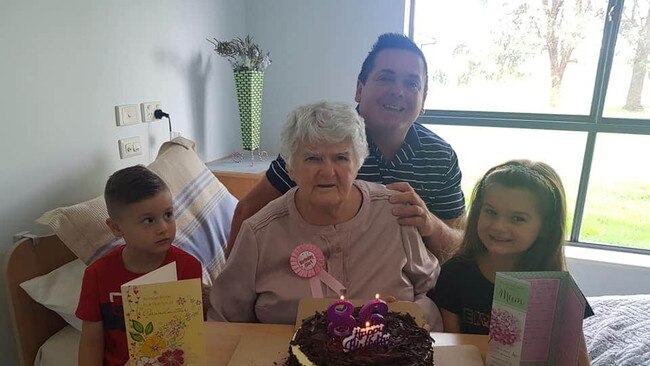
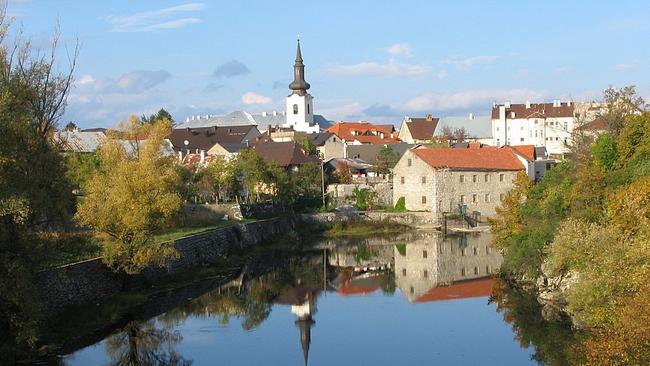
After she contracted COVID-19, and her son Ivan had gone five days without getting an update on her condition, she died alone in the Epworth Hospital on Monday.
Ivan Rukavina recalls the last time he saw his mother, in June. She looked thin. Longstanding skin infections led to her being hospitalised last week, before she tested positive.
“If only,” he says, echoing the thoughts of Mary Watson, the daughter of Alice Bacon, the last to die of the Newmarch House cluster in Sydney’s west, on May 19. If only the nursing home had sent mum to hospital earlier, he says, she might still be alive.
Michelle Turski shares the same lament. She can’t exactly remember the last time she saw her mum, Maria Papantoniou — the past weeks have blurred in grief and anguish.
It’s too much when your father passes away, then your mum, 91, is diagnosed with COVID-19 four weeks later.
Anger and worry etch snapshots in her mind. Her mother, a “fighter” from the Greek island of Rhodes, was diminished by dementia.
Turski has barely spoken to her mother since the pandemic began. She could not hear her whispers through a glass screen, in her allocated 30-minute visit a week, as staff at St Basil’s worked without personal protective equipment.
This was during the first lockdown, when the Newmarch House nursing home in Sydney lost 19 residents and politicians declared the mistakes there could not be repeated.
Yet those mistakes have been repeated. Melbourne has been clobbered by death and grief and indignity and confusion.
The response to the nursing home clusters, belated and ad hoc, suggests an absence of preparedness. It seems there was no plan.
Melbourne’s aged-care clusters replicate what has happened in Sydney, Europe and the United States.
This city has seemed just as unready as the international hot spots which suffered through such dreadful scenes in the first wave.
The first COVID-19 case at St Basil’s was on July 9. It was thought to be another six days before the 100 or so residents were all tested, and in this time infected and non-infected residents had mingled.
UNSHOWERED AND ILLFED
It grates on Turski that her mother, who tested positive on July 24, may have been spared the virus had better protocols been introduced.
Maria Papantoniou was hospitalised last Friday, not with a positive test result (which came after she was admitted), but a catheter-related infection.
Son Tony thinks her catheter had been overlooked by new staff who replaced those forced to isolate.
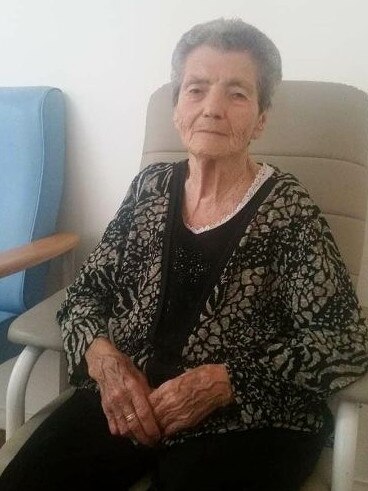
Relatives describe those days as chaos. The new staff did not know which patients were which, and did not tend to their most basic needs.
Spiros Dimitriou saw the “war zone” inside the home first-hand last Saturday. He finally got to see his 75-year-old father, John, a week after his family was told he had tested positive. They were warned to brace for the worst news.
“What have been the lessons out of Newmarch House?” he asks. “It looks like absolutely nothing.”
There is a terrible sameness to the complaints of NSW relatives of the aged several months ago and the grievances of Victorian relatives.
At Newmarch House, families were not being told of their loved one’s condition, and had no say in their care. They waited on phone calls that did not come. At the same time, their loved ones were going unshowered and ill-fed.
St Basil’s is one of many Melbourne homes where cases have exploded. The lack of communication as well as misleading updates have plagued relatives.
Prime Minister Scott Morrison has identified 13 problem homes, although 80 or more aged-care residences have been hit. Almost all of them, from Fawkner to Dandenong, are privately-run, a nursing-home sector notorious for its understaffing and deplorable care.
At the Epping Gardens aged-care home, where two cases grew to 83 in a week, seconded ADF personnel have raised concerns for their safety. Residents were finally being taken to hospitals this week.
Herein lies another sticking point; some hospitals were unwilling to accept nursing-home residents.
So the horror stories mounted. The son of Thelma Hyatt, Tom, was told to arrange the collection of his mother’s body from Epping Gardens because her remains, he was told, were “deteriorating”.
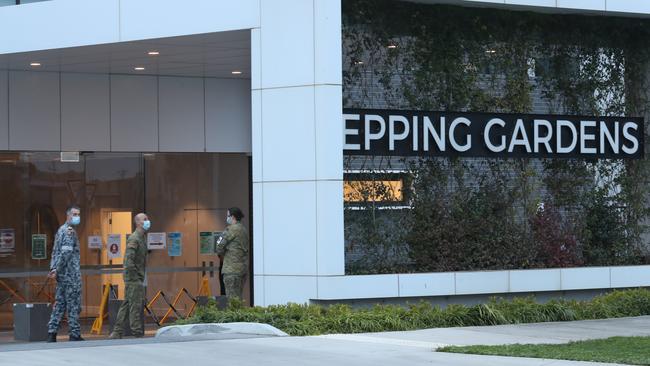
The daughter of Fotini Atzarakis, a St Basil’s resident who died on Wednesday, uses the language of widening disbelief. Her mother lived in a “hellhole” and her death was “preventable”.
Tony Papantoniou says the St Basil’s virus response had been haphazard throughout the pandemic. When he went to farewell his father (who died of non-COVID issues last month), he was not offered a mask or had his temperature taken, as his sister Michelle was.
Their mother was stable in the Royal Melbourne Hospital this week, after her children refused attempts to return her to St Basil’s — anywhere but there, they argued.
And so they wait, listening for the call they do not want to receive.
Ivan Rukavina, meanwhile, has written to St Basil’s administration.
“You killed my mother,” he said.
‘WORKPLACE MANSLAUGHTER’
The St Basil’s website depicts happy residents. A photo shows an old lady perched on a couch with a Greek flag wedged into it. Another depicts an old man sniffing a flower.
Yet St Basil’s has never been a peaceful retreat, according to relatives of its residents. They feel their loved ones have long been neglected.
One man speaks of having to change his own father’s soiled nappies, repeatedly. When Michelle Turski visited her mother, Maria was always wearing stained clothes. She would gulp down water, as if she was dehydrated.
This was before the pandemic, before Theo Makridis went to St Basil’s a day before the second lockdown, on July 7, then died on July 25, five days after his frantic family had last been updated on his health.
The indignities multiplied when the federal government sought to take over staffing in individual care homes. The neediest residents — about a third are bedridden — went unfed and untended.
Authorities reached for a coverall descriptor — “complex” — to describe a flawed response to urine-stained sheets, unchanged catheters, unadministered medicines and the growing numbers of residents testing positive in an age bracket in which the virus kills about four in 10.
Rukavina uses another phrase — “workplace manslaughter”.
Almost half the deaths worldwide from COVID-19 are aged-care residents. Elderly people have far fewer “naive T cells”, which muster the body’s response to fending off an unknown virus.
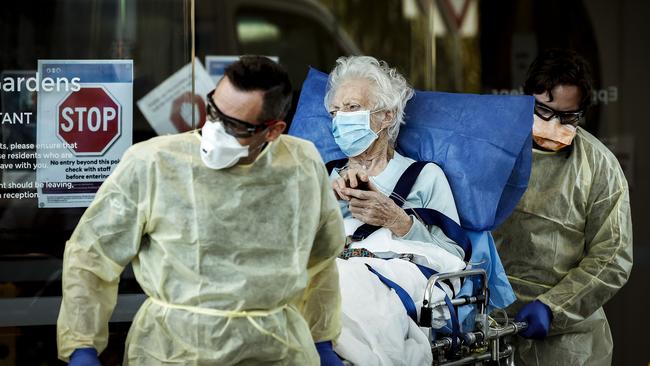
The Melbourne plight mirrors the problems of Spain several months ago, or the US, where aged care has long suffered for understaffing and the use of low-paid carers.
Australia, too, shares that historical shame. The failings of the federally-regulated private nursing home system helped prompt a royal commission, yet to make its final report, in October 2018.
At the time of its launch, nursing and caregiver lobby groups pleaded for greater resident-staff ratios, and argued against the growing casualisation of the workforce.
The lack of legislation for staff-ratio numbers — which are mandatory in the public aged-care system in Victoria — helps explain why almost all of these cases in Victoria are in privately-run homes.
Many caregivers are casually employed. They go from shift to shift at different homes.
In recent weeks, these caregivers probably introduced COVID-19 from one residence to the next. Some may have been asymptomatic; others may have kept working despite showing symptoms because they could not afford to lose shifts.
Relatives are justifiably upset caregivers working in multiple homes with the most susceptible went unchecked for so long.
CANBERRA VS VICTORIA
Genetic testing suggests the strains of virus detected in elderly patients links to the hotel quarantine program, another frontline COVID-19 hotspot handed over — by the Andrews government — to a sector under extended scrutiny.
Nursing homes are federally regulated, yet the health response is a state responsibility.
The Morrison government has been an obvious target for criticism. If there has been agreement at all levels, it is on the use of the word “foreseeable” to describe the crisis.
Yet the official responses have lacked the speed or decisiveness demanded by the scenes of body bags being carried out of aged-care facilities.
A perceived lack of initiative from either Canberra or Spring Street has angered relatives. They wonder why action, given international examples of exponentially growing clusters, was not taken sooner.
The Aged Care Response Centre was launched on July 25 to act against outbreaks as they started, and to improve the lack of information being provided to worried relatives. It also aimed to ensure casual workers could no longer work at more than one facility.
Health Minster Greg Hunt called it “a very important step forward in helping to co-ordinate, helping to ensure rapid response where these cases are occurring”.
But wasn’t it too little, too late? After all, the first St Basil’s positive test was more than two weeks earlier.
Back on July 14, a Herald Sun front page warning “Aged Scare” revealed up to 80 people in nursing homes had been infected. Why wasn’t a massive response operation launched before cases, predictably, hit the hundreds?
A lack of co-operation has endangered lives. At Epping Gardens on Wednesday, after two deaths at the residence, Victorian health officials said the operator was still refusing to hand over control.
The officials claimed they were unable to separate COVID-19 patients and the healthy — within a home, mind, where cases had rocketed from two to 83 in a week.
The litany of claims, which included a refusal to hand over contact details of residents’ relatives, was rejected by the operator, Heritage Care.
Yet the notion of territorial stand-offs, given the explosion of the infection, contradicted the strong rhetoric about swift and targeted responses. What was supposed to be happening seemed very different to what actually was happening.
If we were “all in this together”, as Morrison said, who was tending to the residents still being exposed to a killer virus?
Another clue to official inertia?
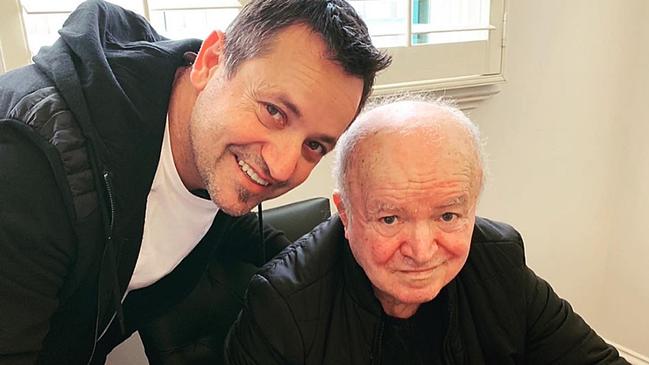
It emerged federal Health Department secretary, Professor Brendan Murphy, first advised Victoria to find more hospital space for the elderly on July 15. He wanted non-urgent elective surgery stopped so that hospitals could absorb aged-care residents at risk.
Every day was critical; cases were escalating. When repeated requests went unheeded, urgent phone chats between the Prime Minister and Premier belatedly took place early this week.
“Short of taking people off operating tables, it could be done no faster,’’ Daniel Andrews said on Wednesday. The day before, he had taken a swipe at Canberra, saying he had lost confidence in the private nursing home sector. He said he wouldn’t want his mother in some of these nursing homes.
Hunt was upset by Andrews’ comments, citing the excellent nursing-home care for his father.
The federal government has now dispatched an elite Australian Medical Assistance Team of doctors, nurses and allied health workers.
Five AUSMAT teams were due in Melbourne on Thursday; teams of seven, they act as first responders in the worst crisis centres.
Andrews and Morrison have both downplayed fractures of thinking.
Murphy, who described any political disagreements as a “storm in a teacup”, spoke of “deficiencies in care” at St Basil’s and elsewhere, but said he hoped it would be “stable” by Thursday.
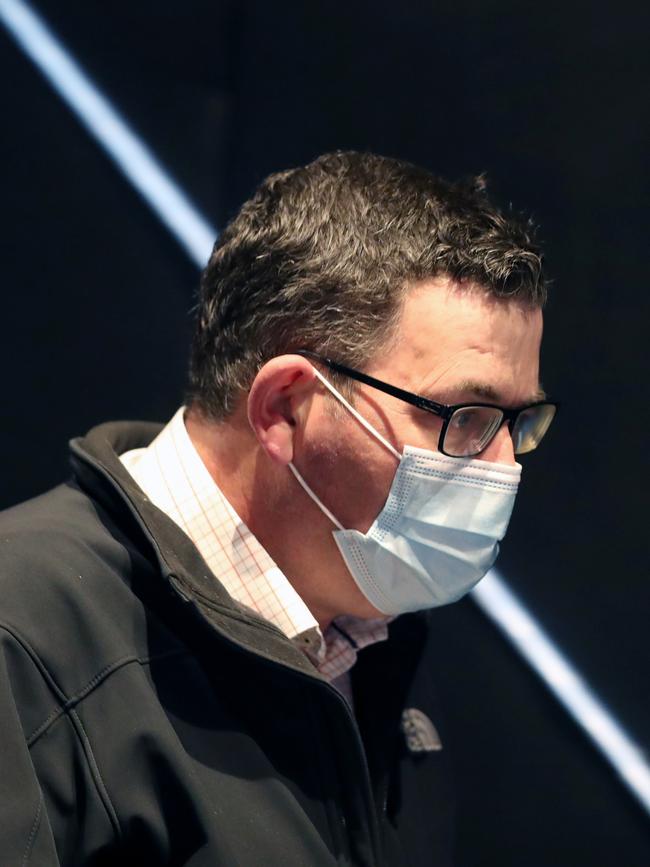
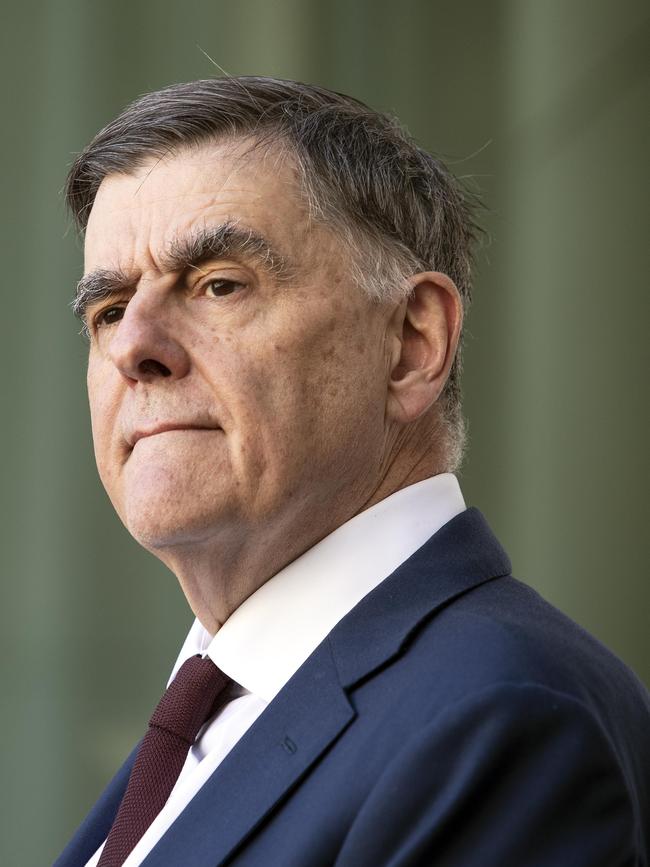
Grieving relatives, understandably, wonder why vital responses have taken so long.
They also point to the underlying problem: the state of the industry before the virus struck.
The sector was castigated in the interim findings of the royal commission, released last October.
The system was a “sad tale of neglect”, “unkind and uncaring” and driven by “transactions” rather than care, the findings said.
Aged care was “out of sight and out of mind”. It was underfunded, in part because the Australian people did not push for change over the course of two decades and 20 major government inquiries.
Research published in the Medical Journal of Australia recently found three in five residents lived in aged-care homes with “unacceptable” staff shortfalls.
Ratios of qualified nurses and allied health workers had dropped significantly since 2003.
The study queried how the federal government placed clinical care responsibility on providers, but did not use a funding model to deliver the required care.
Ivan Rukavina had tried to move his mother from St Basil’s over the past year. For one, she was a Catholic in an Orthodox home.
He also recorded footage of a cat eating food about to be served to residents.
He would visit his mother and find her soiled.
He is angry. The nursing home he wanted to move his mother to has had no cases of COVID-19.
The bells will keep tolling in coming days. Rukavina says the same thing in a different way.
“It shows the nation that we have f....d up,” he says.
“I don’t think we can f..k up any harder than we have.
“Why wasn’t the world’s most liveable city ready for this?
“How much warning did we need?”
MORE NEWS
MASKS MANDATORY ACROSS VICTORIA ON STATE’S DARKEST DAY

